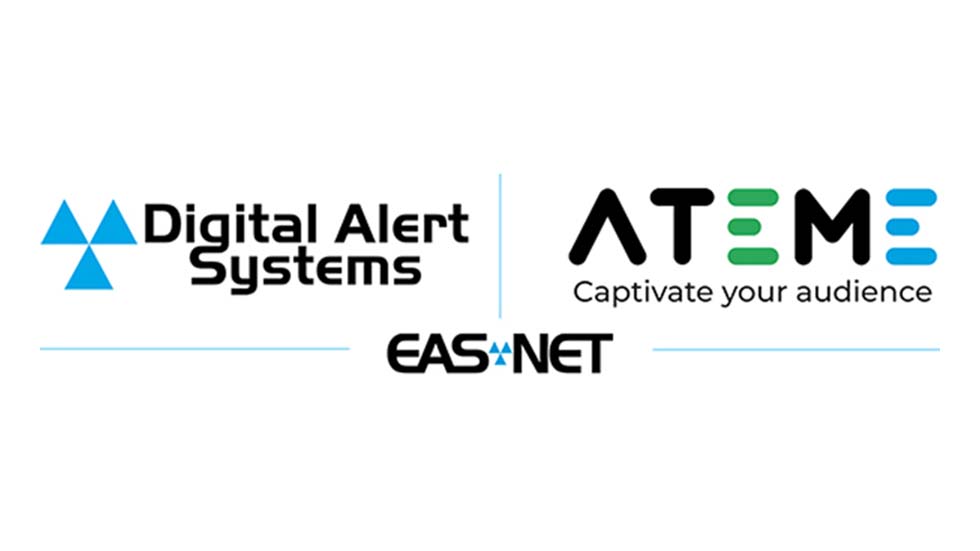
LYNDONVILLE, N.Y.—Digital Alert Systems and video compression tech specialist Ateme today said they will collaborate on Emergency Alert System (EAS) integration, making it more efficient and cost-effective for broadcasters and cable operators.
The partnership adds Digital Alert Systems’ EAS-Net device networking protocol to Ateme’s TITAN line of SD, HD and UHD encoders. The integration allows Digital Alert Systems’ DASDEC flexible emergency-messaging platforms to connect directly to Ateme solutions via a simple network connection, eliminating the need for added hardware or software to provide full EAS text crawl and audio capabilities across all streams from the Ateme units.
“We are pleased to offer EAS-Net within the TITAN encoders to streamline airchains, reduce potential points of failure, increase redundancy and reduce costs,” ATEME Director of ATSC Sales Fred Ramsey said. “Digital Alert Systems and its EAS-Net interface are the gold standard for emergency alerting. We have the highest regard for the system and are eager to enable our customers to benefit from this advancement.”
Prior to the integration, linking DASDEC and the Ateme solutions required a combination of the legacy SCTE-18 protocol with an MPEG-2 transport stream for audio, resulting in a more rigid equipment configuration. The addition of EAS-Net introduces a new mode that supports hybrid virtualization at a significantly lower cost than previous methods. This makes it an attractive option for smaller broadcasters and those looking to implement more flexible, IP-based workflows, the companies said.
A key advantage of the integration is its ability to work across all streams in the Ateme encoding systems. Users no longer need one unit per stream or multiple DASDEC clients to support this comprehensive solution. This single-interface approach reduces equipment footprints and simplifies system design. The configuration process also has been greatly simplified, requiring only a network connection between the two systems. There are no restrictions on colocation, nor is there a need for additional hardware to provide fully compliant EAS text crawls and audio through the Ateme platform, they said.
“Teaming up with Ateme to bring this innovative solution to market is a real boon for our shared customers,” Bill Robertson, vice president of business development at Digital Alert Systems, said. “EAS-Net has become the de facto standard for linking equipment together for EAS information exchange, and the integration with Ateme shows how this protocol works around the facility and across multiple platforms for playout, automation and direct transcoder support. This level of flexibility allows broadcasters to select and implement newer, higher-performance equipment while maintaining seamless emergency alert capabilities. By integrating EAS-Net into Ateme’s encoder solution, broadcasters can ensure that critical emergency alerts reach viewers more efficiently and reliably.”
More information is available on the Ateme and Digital Alert Systems websites.
The professional video industry's #1 source for news, trends and product and tech information. Sign up below.
Phil Kurz is a contributing editor to TV Tech. He has written about TV and video technology for more than 30 years and served as editor of three leading industry magazines. He earned a Bachelor of Journalism and a Master’s Degree in Journalism from the University of Missouri-Columbia School of Journalism.

